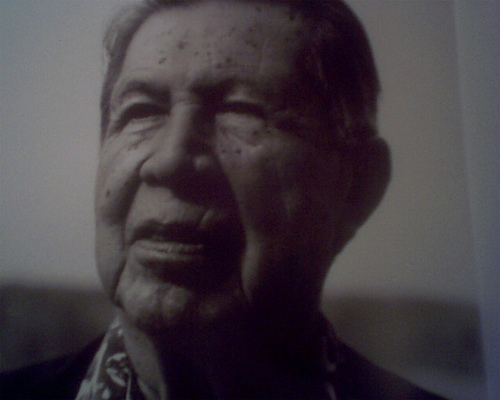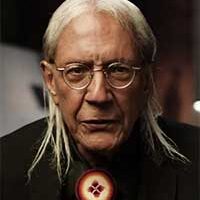
Born and raised in the Florida Everglades, Miccosukee Indian leader, William Buffalo Tiger had a remarkable life, not the least of which was meeting with Cuban leader Fidel Castro and storied revolutionary Che Guevara in 1959 in Havana. He walked on at 94 on January 6, 2015.
As a Native leader, his advocacy contributed to hallmarks not just for his own tribe but for others throughout the wide expanse of Indian Country. Among his many achievements were his involvement in the formation of the Indian Self-Determination and Education Act of 1975 and the founding of the United South and Eastern Tribes (USET) in Nashville, Tennessee, in 1969.
In a statement provided upon Buffalo Tiger’s passing, USET President Brian Patterson eulogized, “We grieve the loss of a truly great leader, who will be loved and missed. From a time where Indian Country was shrouded in darkness with no money, no direction and no hope, we are thankful for the courage and medicine Buffalo Tiger gave us to advance tribal nations and future generations. For the Miccosukee Tribe of Indians of Florida and all of Indian Country, Chairman Tiger was a trailblazer to help bring federal recognition and assistance for his tribe, a founding leader of USET, and an inspiration that there is hope beyond the darkness.”
He served as Miccosukee Chairman from 1957 to 1985. Buffalo Tiger consistently utilized tribal sovereignty to preserve Miccosukee culture and traditions in the ancient homeland.
Some historical background is necessary to appreciate the circumstances that produced this outstanding Native leader. The Seminoles who fought three wars with the U.S. in the 19th century were mainly composed of two peoples – the Muskogee speakers (closely related to the Creeks), who became known as Seminoles, and the Hitchiti speakers (distantly related to the Creeks), now known as the Miccosukees. By the federal government they were collectively known as Seminoles. But the two peoples remained separate tribal entities.
These Indian peoples fought those three wars with the U.S. as a result of invasions by federal troops. The first of these wars began with U.S. aggression in 1818, led by that archenemy of Native people, Andrew Jackson.
Although considered part of the Seminole, the Miccosukee had long maintained their separation and tended to live in greater isolation in the Everglades. The U.S. government in the 1940s set aside reservations for the Seminole peoples. But the Miccosukee stayed on non-reservation lands in the lower Everglades.
In the 1950s, the federal government threatened to terminate the entire tribe – meaning to reduce or eliminate services and benefits guaranteed by law to American Indians. Remember, also, the Seminoles had never signed a peace treaty with the U.S., earning them the title “Unconquered.”
Incensed at the proposed federal action, the two Indian peoples organized politically and were federally recognized as the Seminole Tribe of Florida in 1957. But there were significant political differences between the tribes. The Muskogee speakers, the Seminoles, had filed in 1950 with the Indian Claims Commission for compensation for lands taken by the federal government in the 1800s. The Hitchiti speakers, the Miccosukees, wanted the return of the land and refused compensation.
Over these differences, the Seminoles and Miccosukees formally separated. Buffalo Tiger led the Miccosukees to gain separate state recognition in 1957. In the meantime, the federal government failed to meet a critical deadline for recognition of the Miccosukees as a separate nation. In response Buffalo Tiger requested recognition of Miccosukee nationhood from other nations. The only country to respond was socialist Cuba, led by Fidel Castro. In 1959, Buffalo Tiger and other members of the tribal council traveled to Cuba and met with Prime Minister Castro, Che Guevara and other leaders of the revolutionary Marxist-Leninist government.
Buffalo Tiger aptly described the situation in a 1987 Miami Herald interview:
“The government wanted to pay us money to shut up. We wanted land set aside for us and to be left alone. No one in Washington would listen to us. So when Castro took over, I went over there and smoked some cigars with him and Che Guevara and I asked them: “Do you recognize the Miccosukee Tribe?” Castro said he did. He said that if the United States would not give us a place to live, we were welcome to come over there and he would make room for us. When we got back, there were all kinds of phone calls from Washington. The government started dealing with us seriously then.”
Castro recognized the Miccosukee as a separate nation. Buffalo Tiger presented Fidel with a statement on buckskin lauding the Cuban Revolution as a victory “over tyranny and oppression,” and extended Miccosukee recognition to the socialist government. In response Castro recognized the “duly constituted government of the Miccosukee Nation.”
In a signed document, Castro honored the Miccosukee leadership for “the long struggle of your Miccosukee Nation and the perseverance of your indomitable and freedom-loving people….”
The Cuba/ Miccosukee meeting was a diplomatic coup as the U.S. government did not want further exposure of its shameful treatment of Indian people. Throughout his long life Buffalo Tiger remained an outspoken leader of his tribe. His meeting with Fidel Castro and Che Guevara in defiance of U.S. attempts to destroy tribal sovereignty will always resonate in the chronicles of American Indian history.
Historical records state that in the Seminole Wars the Miccosukee were “noted for their courage, dash and audacity.” Buffalo Tiger maintained that proud tradition when Miccosukee sovereignty met with Marxism/Leninism.
Photo: Billy_Snakehawk/Flickr










